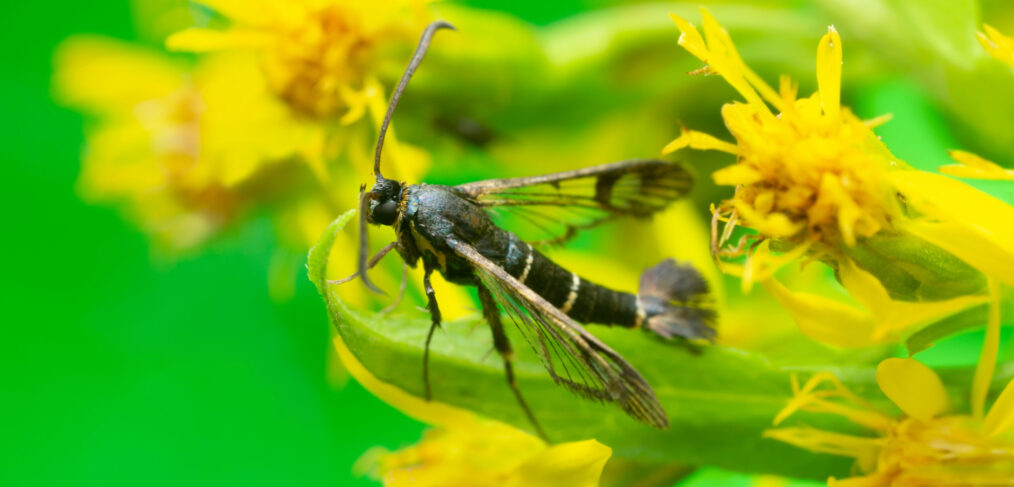
Species of the week #122 – Synanthedon cephiformis
Synanthedon cephiformis are small butterflies whose appearance is less reminiscent of a butterfly than of a wasp. This form of imitation is called mimicry. Synanthedon cephiformis also imitate the behaviour of wasps to protect themselves from enemies; some of them even produce a wasp-like humming sound. The distinguishing feature of these small butterflies is their largely transparent – or glassy – wings, which are otherwise familiar to hymenopterans such as wasps and bees.
| Distribution status in Germany | unknown |
| Remaining occurance | Baden-Württemberg, Alsace, Switzerland, Greece |
| Last sighting in Germany | unknown |
| Habitat
Threat |
cool damp fir forests, partly also fir woods
unknown |
In contrast to other glasswinged moths, the Synanthedon cephiformis is not quite as similar to wasps as it is mainly black in colour. The typical warning colour combination of black and yellow is shown by four narrow yellow rings on its body. In addition, there are delicate yellow colour accents at the base of the wings and on the forewings as well as on the legs and the anal bush at the end of the abdomen. The antennae also often bear hair tufts. All glasswinged moths are diurnal and fly mainly in sunshine. They lay their eggs only on fir trees. The caterpillars that hatch from them bore into the bark and initially live just below it. This is particularly easy in crab galls caused by the rust fungus. Only later do they feed deeper into the lower part of the trunk and into the roots. After three to four years, a feeding tunnel is eaten towards the bark, where the caterpillar pupates in a cocoon. Before hatching, the very mobile pupa pushes itself out of the cocoon as well as out of the pupa chamber into the open with the help of thorn crowns so that the moth can hatch unharmed. It can even survive in the crab gall caused by the rust fungus if the fir tree has already been felled.
Synanthedon cephiformis live very hidden, hardly come to light and cannot be attracted with the currently known attractants. Detections are only possible in autochthonous fir occurrences, i.e. fir forests that have developed naturally at the respective location without human influence.
The Synanthedon cephiformis is highly endangered throughout Germany, and the long-term population trend shows a strong decline. The exact reason for this is unknown. Conceivable causes are the decline of fir forests and climate change, which heats up the preferred cool-fresh forests.
Political necessity:
– Fund research on the population and causes of endangerment of fir glasswinged moths.
– Comprehensive monitoring of endangered species
– Securing autochthonous forests
